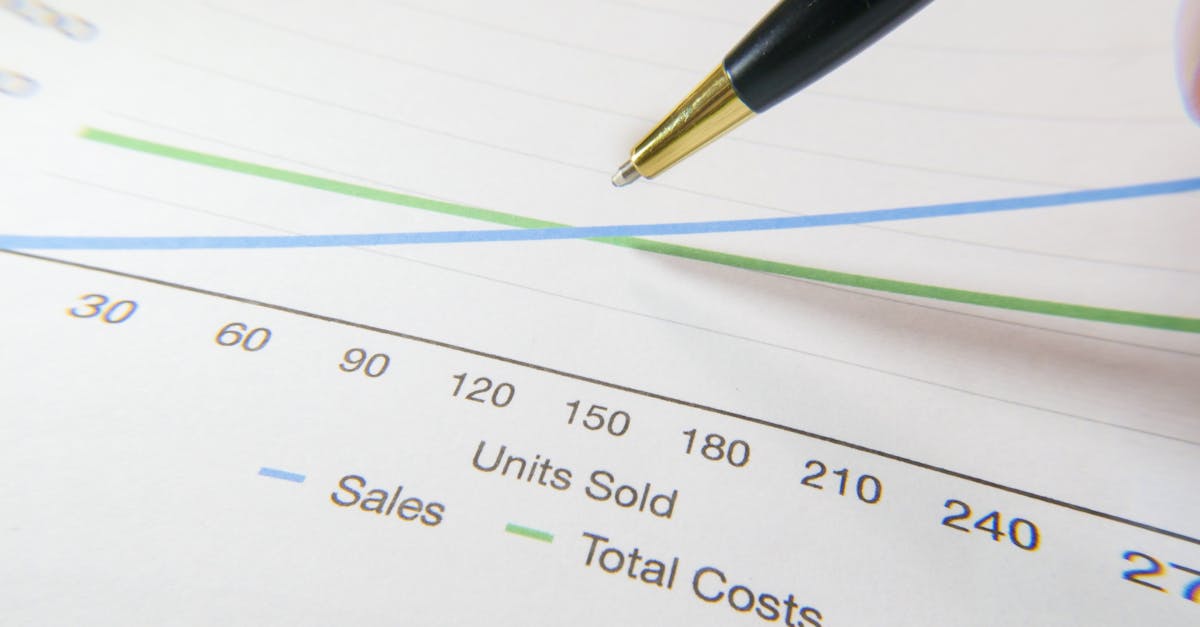Key Takeaways
- AI and BPA integration enhances efficiency: Combining artificial intelligence (AI) with Business Process Automation (BPA) streamlines marketing and sales operations, automating repetitive tasks while improving decision-making processes.
- Improved personalization drives customer engagement: AI-powered tools analyze customer data to deliver tailored experiences, such as personalized emails, product recommendations, and chatbot interactions.
- Predictive analytics enable smarter strategies: Leveraging AI for predictive insights helps businesses anticipate trends, optimize campaigns in real time, and prioritize high-value leads effectively.
- Increased productivity and accuracy: Automating workflows reduces manual effort, minimizes errors, and allows teams to focus on high-impact activities like strategy development or deal closures.
- Challenges include implementation complexity and data security: Adopting AI-driven BPA requires overcoming hurdles like system compatibility issues, employee resistance, costs, and ensuring robust data privacy measures.
- Future innovations will redefine operations: Advancements like hyperautomation, low-code platforms, and adaptive AI systems are transforming the way businesses approach marketing and sales processes at scale.
In today’s fast-paced digital world, businesses are under constant pressure to deliver personalized experiences and drive revenue growth. Studies show that companies leveraging artificial intelligence (AI) in their processes see a 40% improvement in efficiency. When paired with Business Process Automation (BPA), AI becomes a game-changer for marketing and sales operations.
By automating repetitive tasks and analyzing vast amounts of data, we can focus on crafting strategies that truly resonate with our audience. From predictive analytics to lead scoring, the integration of AI within BPA empowers us to make smarter decisions faster. It’s not just about saving time—it’s about creating meaningful connections that translate into measurable results.
As competition intensifies, adopting these technologies isn’t optional; it’s essential. Let’s explore how combining AI with BPA transforms the way we approach marketing and sales, giving us the edge needed to thrive in an ever-evolving marketplace.
Understanding BPA And Its Role In Marketing And Sales
Business Process Automation (BPA) revolutionizes how marketing and sales teams operate. By automating repetitive processes, BPA enables organizations to focus on strategic initiatives that drive growth and customer engagement.
What Is BPA?
BPA refers to the use of technology to automate routine business processes. These tasks often include data entry, lead management, email follow-ups, and report generation. Instead of relying on manual effort, businesses streamline workflows with BPA tools like CRM software or marketing automation platforms.
In marketing and sales, BPA helps simplify lead nurturing by automating email campaigns based on user behavior or demographics. For example, if a potential customer downloads a whitepaper from your website, automated systems can trigger personalized emails guiding them toward purchase decisions. Similarly, in sales operations, tasks such as updating contact information or scheduling follow-ups become seamless through automation.
The goal isn't just saving time but eliminating human error in repetitive activities. Efficient processes allow teams to concentrate on high-impact actions like crafting compelling content strategies or closing deals faster.
Key Benefits Of BPA In Business Operations
- Increased Productivity
Automating mundane tasks frees employees for higher-value responsibilities. For instance, service companies using Field Service Automation tools reduce manual scheduling efforts while improving task assignments for technicians.
- Enhanced Accuracy
Manual errors are reduced when systems handle data processing automatically. Tools like Service Dispatch Software ensure accurate job tracking without missing details crucial for completion.
- Improved Customer Engagement
Automation enhances communication with customers through timely responses and tailored campaigns based on their preferences—turning prospects into loyal clients over time.
- Cost Efficiency
Businesses save resources by optimizing workflows with fewer operational bottlenecks—for example, employing Technician Route Optimization software minimizes unnecessary travel costs for field workers.
- Faster Decision-Making
Real-time insights delivered via automated reports help leadership identify trends quickly and adapt strategies effectively across departments like marketing or sales.
The Intersection Of AI And BPA
Integrating AI with BPA creates a dynamic combination that enhances marketing and sales operations. Together, they optimize workflows, improve decision-making, and enable organizations to deliver smarter solutions.
How AI Transforms BPA
AI elevates BPA by introducing advanced capabilities like predictive analytics, natural language processing, and machine learning. These features allow businesses to analyze customer data more effectively and automate complex tasks. For example, while BPA automates sending follow-up emails based on pre-set rules, AI determines the ideal timing and content for each recipient by analyzing their behavior patterns.
AI also enables real-time process adjustments. If a campaign underperforms mid-launch due to low engagement rates, AI can identify the issue and suggest alternatives without human intervention. This adaptability reduces delays in marketing strategies.
In lead scoring processes, combining AI with BPA ensures high-value prospects are prioritized accurately. AI evaluates data from multiple sources—such as website activity or purchase history—and feeds it into automated workflows for seamless execution.
This integration doesn’t just stop at improving efficiency; it fosters innovation in delivering personalized experiences at scale.
Advantages Of Combining AI With BPA
Joining forces between AI and BPA drives measurable benefits across marketing and sales teams. First, it saves time by eliminating manual tasks such as updating CRM databases or managing email lists automatically while reducing errors caused by human oversight.
Second, decisions become faster since AI analyzes vast datasets instantly while BPA executes actions promptly based on insights generated. Teams no longer lose precious hours evaluating trends manually or crafting responses from scratch.
Enhanced personalization is another significant advantage. By leveraging customer insights through automation powered by intelligence tools like chatbots or recommendation engines, companies strengthen engagement efforts effectively.
Enhancing Marketing Operations With AI-Driven BPA
AI-driven Business Process Automation (BPA) is transforming marketing operations by simplifying processes, boosting accuracy, and delivering results more efficiently. By automating repetitive tasks and analyzing data at scale, we can focus on strategies that drive growth.
Streamlining Campaign Management
AI simplifies managing campaigns by using advanced algorithms to handle complex workflows across multiple platforms. Automated tools reduce manual effort while executing campaigns with high precision. For example, AI adjusts campaign budgets in real-time based on performance metrics like click-through rates or conversions.
Predictive analytics enable smarter decisions during campaigns. If a specific ad underperforms, AI reallocates resources to better-performing channels instantly. This quick adaptability improves ROI and reduces wasted spending.
Human errors become nearly non-existent with automated systems monitoring campaign performance 24/7. Teams save time previously spent checking for mistakes or inconsistencies. As a result, marketers can dedicate their energy to creative ideas rather than tedious administrative tasks.
Personalizing Customer Experiences
Personalization becomes seamless when AI integrates with BPA tools. Using customer data such as purchase history or browsing behavior, AI crafts individualized experiences—from email content to website recommendations—that resonate with each user.
Imagine receiving an email suggesting products you’ve been eyeing online—this level of customization makes customers feel valued and understood. Personalized interactions increase engagement rates significantly compared to generic messaging efforts.
Additionally, AI-driven chatbots enhance customer service by providing instant responses tailored to user queries without human intervention. These tools improve satisfaction levels while freeing up teams for higher-priority tasks like strategic planning or content creation.
Predictive Analytics In Marketing
Predictive analytics empowers us to anticipate trends before they emerge fully in the market landscape. By analyzing historical data patterns combined with current consumer behaviors, predictive models forecast future outcomes accurately.
Marketers use this insight for proactive planning instead of reacting late to changes in audience preferences or industry shifts. For instance, launching seasonal promotions becomes more effective when guided by predictions about peak shopping periods derived from past sales records.
Elevating Sales Operations Using AI And BPA
AI combined with BPA transforms sales operations by automating repetitive tasks, refining decision-making, and streamlining workflows. This synergy allows teams to focus on high-impact activities that drive revenue growth.
Automating Lead Qualification
AI-driven automation simplifies lead qualification by analyzing vast datasets to identify potential customers with the highest conversion likelihood. It filters leads based on predefined criteria such as demographics, purchase history, or online behavior. For example, AI tools can assess website visitor activity and prioritize users who download whitepapers or request product demos.
This process eliminates manual sorting of leads, saving time while increasing accuracy. Sales teams can then concentrate their efforts on engaging qualified prospects rather than chasing unverified opportunities. Integrating AI into CRM systems further enhances this efficiency by automatically assigning leads to appropriate team members.
Optimizing Sales Pipelines
Sales pipelines become more efficient using AI-powered insights and automated tracking tools. AI analyzes patterns in customer interactions to predict deal progression stages accurately. These predictions help streamline processes like follow-ups or proposal adjustments based on real-time data.
Automation also ensures consistent updates within the pipeline without relying solely on manual input from team members. For instance, after a client meeting is logged into the system, automated reminders for follow-up calls can be generated instantly. By reducing delays and improving visibility across all deal stages, businesses increase their chances of closing deals faster.
Improving Customer Relationship Management
AI-enhanced CRM systems allow deeper personalization in customer interactions through intelligent data analysis. They track communication history, preferences, and purchasing habits to suggest tailored strategies for engagement. For example, if a customer frequently orders during seasonal sales events, targeted offers can be sent ahead of those periods.
Automated note-taking during meetings or calls ensures no critical detail is overlooked when managing relationships over time. Additionally, predictive analytics enable proactive measures—such as offering solutions before issues arise—fostering trust and loyalty among clients while driving long-term value creation for businesses leveraging these technologies effectively.
Challenges And Considerations
Leveraging AI within BPA offers enormous potential but comes with its own set of challenges. Addressing these issues is crucial for maximizing marketing and sales efficiency.
Implementation Roadblocks
Integrating AI into existing systems often proves complex. Legacy systems may lack compatibility with modern AI tools, requiring significant upgrades or replacements. For instance, outdated CRM platforms might not support the advanced analytics needed for effective lead scoring.
Costs can also be a barrier. Initial investments in AI-driven BPA solutions can be substantial, especially for small businesses operating on tight budgets. While larger organizations can absorb such expenses more easily, smaller teams must carefully allocate resources to avoid financial strain.
Resistance from employees adds another layer of complexity. Workers may hesitate to adopt new technologies due to fears about job security or difficulties learning unfamiliar systems. Offering comprehensive training sessions and highlighting the benefits—like automating repetitive tasks—can ease transitions.
Finally, achieving accurate implementation depends heavily on data quality. Incomplete or inconsistent datasets hinder machine learning algorithms from delivering meaningful insights. Regular audits and maintenance are necessary to keep data clean and reliable before integrating it into automated workflows.
Data Privacy And Security Concerns
AI-powered automation relies on processing vast amounts of sensitive customer information like demographics, purchasing habits, and online behavior patterns. Mishandling this data poses serious risks to both business reputation and compliance with regulations such as GDPR or CCPA.
Ensuring cybersecurity measures align with industry standards is critical when deploying AI in BPA ecosystems. This includes using encryption protocols for storage and transmission of sensitive information alongside multi-factor authentication methods to restrict unauthorized access.
Another concern lies in third-party vendors providing external AI services. Companies must exercise caution by thoroughly evaluating vendor practices related to data handling policies before sharing confidential information with them.
Transparency matters too; customers expect clarity regarding how their data will be used by automated processes like personalized recommendations or targeted email campaigns powered by machine learning models. Clear communication fosters trust while avoiding legal complications stemming from misuse concerns.
Future Trends And Innovations
AI's integration with BPA is reshaping marketing and sales operations, offering smarter, more efficient solutions. Emerging technologies are driving innovation and setting the stage for transformative changes in how businesses engage customers.
The Evolution Of AI In BPA
AI is advancing BPA by enabling systems to adapt and improve through data-driven learning. Unlike static automation, these intelligent systems process vast datasets, identify patterns, and make real-time decisions without human involvement. For example, AI can analyze customer purchase histories to predict future buying behavior or adjust email campaigns dynamically based on engagement metrics.
Hyperautomation is another key trend combining AI with tools like machine learning (ML) and robotic process automation (RPA). This approach automates entire workflows rather than isolated tasks. Marketing teams use hyperautomation to streamline campaign creation from audience segmentation to post-campaign analysis.
No-code and low-code platforms are making automation accessible to non-technical users. Employees design automated workflows using intuitive interfaces instead of writing complex code. Sales professionals leverage these platforms for faster lead tracking or personalized follow-ups without waiting for IT support.
Potential Impact On Marketing And Sales
AI-powered BPA offers game-changing potential for marketing and sales departments. Predictive analytics lets marketers forecast trends by analyzing customer behaviors or seasonal purchasing habits. With this insight, they craft targeted strategies that align with demand spikes or preferences.
In sales, AI simplifies lead qualification processes by evaluating prospects against predefined criteria such as location or past interactions. Automated tools accelerate deal progression while eliminating manual errors in pipeline updates.
Customer engagement also benefits significantly from AI-enhanced personalization features. Intelligent chatbots offer tailored responses based on user inputs during website interactions. Additionally, CRM systems powered by AI track communication history automatically while suggesting optimal next steps for nurturing client relationships effectively at scale.
Conclusion
Leveraging AI within BPA transforms marketing and sales operations by streamlining workflows, enhancing personalization, and driving smarter decision-making. These technologies empower businesses to deliver meaningful customer experiences while optimizing resources for maximum growth.
As we embrace this integration, it's crucial to address potential challenges like data quality, system compatibility, and privacy concerns. With proper planning and innovative tools at our disposal, the possibilities for success are immense.
AI-driven BPA is not just a trend; it's shaping the future of how we engage with customers, make decisions, and achieve sustainable results in an increasingly competitive landscape.
Frequently Asked Questions
What is Business Process Automation (BPA)?
Business Process Automation (BPA) involves using technology to automate repetitive and manual tasks, such as data entry, lead management, or email follow-ups. BPA streamlines workflows, improves efficiency, reduces errors, and allows teams to focus on more strategic activities that drive growth.
How does AI enhance BPA in marketing and sales?
AI enhances BPA by introducing advanced capabilities like predictive analytics and machine learning. It helps analyze customer behavior, personalize experiences, optimize campaign performance in real-time, and automate complex processes like lead qualification and tailored engagement strategies.
What are the benefits of integrating AI with BPA?
Integrating AI with BPA saves time by automating tasks, enables faster decision-making through instant data analysis, enhances personalization using intelligent tools like chatbots, improves ROI by optimizing workflows in real-time, and fosters better customer engagement.
How can AI-driven BPA improve customer personalization?
AI-driven BPA uses customer data to create personalized experiences. For example, it analyzes user behavior to determine optimal content delivery timing or suggests tailored communication strategies based on interaction history stored in CRM systems.
What challenges come with implementing AI-powered BPA?
Challenges include high implementation costs for smaller businesses, integration complexity with existing systems, employee resistance to change, reliance on high-quality datasets for accuracy, and managing data privacy concerns through robust cybersecurity measures.
What is hyperautomation in relation to AI and BPA?
Hyperautomation combines AI with technologies like machine learning and robotic process automation (RPA) to automate entire workflows. It enables seamless end-to-end process optimization without human intervention while improving speed and accuracy at scale.
Can small businesses benefit from AI-powered BPA despite its cost?
Yes! While initial costs may seem significant for smaller businesses, no-code/low-code platforms now make automation more accessible. These platforms reduce development time while offering affordable solutions for automating repetitive tasks effectively.
How do predictive analytics support marketing campaigns?
Predictive analytics uses historical data trends to forecast outcomes. In marketing campaigns, it helps identify future opportunities or potential issues early on so marketers can adjust strategies proactively for better results.
Why is data quality important when leveraging AI within BPA?
High-quality data ensures accurate insights since incomplete or inaccurate datasets hinder machine learning effectiveness. Clean datasets allow AI systems to perform reliable analyses essential for decision-making and workflow automation success.
What role do intelligent chatbots play in enhancing customer engagement?
Intelligent chatbots use natural language processing (NLP) powered by AI to provide personalized interactions 24/7. They answer queries instantly while adapting responses based on user intent or preferences—boosting engagement rates effectively.






